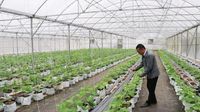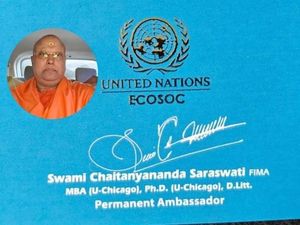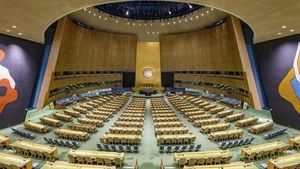On August 18, 2025, two pivotal events unfolded in Vietnam’s export sector, each underscoring both the promise and the mounting pressures facing Vietnamese businesses in the global marketplace. In Pleiku, Gia Lai province, the local government convened a conference aimed at boosting exports to China, one of the world’s largest consumer markets. Meanwhile, in Ho Chi Minh City, the 2025 Import-Export Forum brought together over 500 major import-export enterprises to tackle the increasingly complex landscape of international trade, particularly with the United States tightening its grip on customs and trade defense policies.
Gia Lai’s export ambitions were on full display at the conference, which sought to open doors for the province’s key agricultural and handicraft products in China’s vast market of over 1.4 billion consumers. According to Phap Luat Viet Nam, Nguyen Tuan Thanh, Permanent Vice Chairman of the Gia Lai People’s Committee, set the stage by highlighting the province’s formidable resources: Gia Lai boasts the second largest natural area in Vietnam, with approximately 977,000 hectares of agricultural production land and about 770,000 hectares of annual planting area. Of particular note are the 753,000 hectares of red soil, much of it the prized basalt variety, which is ideal for cultivating staples such as coffee, pepper, rubber, fruit trees, and high-value medicinal plants.
“The conference is an important occasion for management agencies, businesses, associations, and partners to meet, exchange information, and seek opportunities for cooperation, investment, and market development,” Thanh stated. He emphasized that international economic integration is deepening, making the expansion of trade relations crucial for growth and competitiveness. “Exports and imports not only help diversify markets but also create opportunities for businesses to access new technologies, techniques, and raw materials,” he added.
Attendees focused on a range of pressing topics, including the potential and advantages of Gia Lai’s agricultural exports, the requirements and standards of the Chinese market, and strategies for enhancing production, processing, and logistics. Notably, the use of AI to manage large raw material areas was discussed as a way to modernize and streamline export operations. The conference also served as a platform for direct engagement: businesses from Guangxi (China) and Gia Lai signed seven memorandums of understanding, paving the way for deeper penetration of Gia Lai’s agricultural and processed products into China.
Specific agreements included Guangxi’s Lusemei Dongxing Company partnering with Thagrico Cao Nguyen for durian purchases, Nafoods Tay Nguyen for passion fruit, Tin Thanh Dat for coffee, and Gia Lai Livestock for bananas. Vplus Group inked a deal with Huong Duong Gia Lai for durian, while the Hung Thom Gia Lai Cooperative will supply passion fruit. In a broader move, Guangxi’s Lieu Duoc Group agreed to buy processed agricultural products from Vinanutrifood Binh Dinh, all sourced in Gia Lai. These deals represent a tangible step toward realizing the province’s export ambitions and leveraging its agricultural strengths.
But as Gia Lai looks to the future, the broader Vietnamese export sector is grappling with formidable challenges, as detailed during the Import-Export Forum in Ho Chi Minh City. According to Tai Chinh, since mid-2024, the US government has ramped up customs tax policies and tightened trade defense investigation procedures, with a particular focus on preventing export origin fraud. Products from countries with signs of “transshipment”—where goods are routed through third countries to avoid tariffs—face especially tough scrutiny, and Vietnam is among those under the microscope.
This new reality means Vietnamese exporters must now contend with dual standards: they must not only prove the origin of their goods but also improve their risk management capacity when it comes to costs and supply chains. The forum revealed that enterprises have three urgent needs: understanding new policies to avoid risks, redefining market and product strategies, and accessing support policies and networks that can help them adapt.
Global supply chains are in flux, with order flows shifting and the criteria for selecting suppliers evolving rapidly. Vietnamese companies are being reassessed more rigorously than ever before. Economic experts and policymakers at the forum provided updates on new regulations that directly impact production and export activities, especially as international markets remain volatile. They also offered recommendations on how to control export origin fraud, expand export markets, and transform operational models to remain competitive.
One key area of focus was the need for businesses to demonstrate that their goods are genuinely assembled in Vietnam. Customs procedures require clear proof that imported components are used in domestic production, and that the final goods meet the criteria for being labeled “Made in Vietnam.” According to Vũ Xuân Hưng from the Legal and Trade Documentation Department (VCCI Ho Chi Minh City), “Enterprises must prove that goods are assembled in Vietnam, the assembly process occurs in Vietnam, and imported parts are used in the process.” This is not just a matter of paperwork; it’s about ensuring that Vietnamese exports are not subject to punitive tariffs or accusations of transshipment.
The stakes are high. The US currently applies a 20% tariff on most Vietnamese export goods, but goods suspected of transshipment can face tariffs as high as 40%. Phùng Thị Ngọc Anh, Senior Director of Tax Consulting at Alvarez & Marsal, cautioned, “Any additional processing or materials added to goods in another country must result in a significant transformation for that country to be considered the country of origin.” She urged businesses to keep their export documentation “clean,” tighten their sourcing processes, review all origin records and contracts for transparency, and restructure their supply chains to increase localization and reduce short-term costs.
In the long term, Ngọc Anh advised companies to invest in production and technology, particularly in high-value stages such as design, software, and research. Reducing production, energy, and labor costs through process improvements and technology is also crucial. She added that businesses should diversify their market strategies to avoid over-reliance on the US, taking advantage of agreements like the EVFTA and CPTPP.
Despite these headwinds, experts remain cautiously optimistic about Vietnam’s prospects. Nguyen Xuan Thanh of the Fulbright School of Public Policy and Management noted that Vietnam is expected to maintain its position as a destination for foreign direct investment, even amid geopolitical tensions and supply chain shifts. However, he warned that the short-term impacts are real: the global economic slowdown and high tariffs are likely to dampen export demand in the latter half of the year, especially after strong growth in the first seven months.
For Vietnamese exporters, the message from both Pleiku and Ho Chi Minh City is clear: opportunity and adversity are two sides of the same coin. Success in the coming years will depend on the ability to adapt, innovate, and meet the ever-stricter demands of global markets, all while leveraging the nation’s agricultural prowess and manufacturing resilience. As the landscape shifts, those who can navigate these challenges will be best positioned to seize the benefits of Vietnam’s expanding role in world trade.





